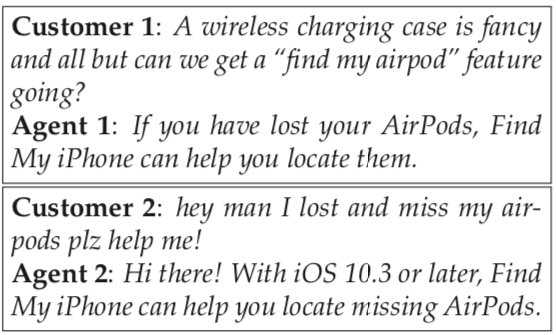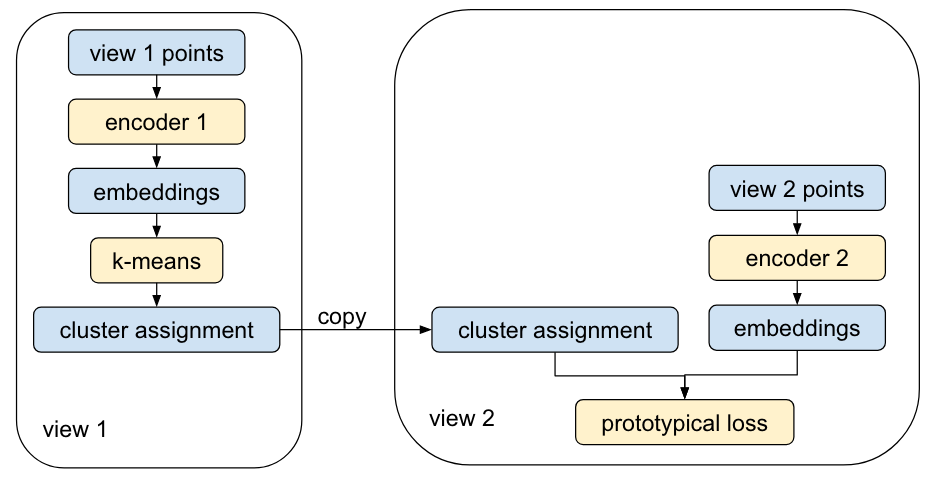Code and data for paper "Dialog Intent Induction with Deep Multi-View Clustering", Hugh Perkins and Yi Yang, 2019, to appear in EMNLP 2019.
Data is available in the sub-directory data, with a specific LICENSE file.
Dialog Intent Induction
Dialog intent induction aims at automatically discovering dialog intents from human-human conversations. The problem is largely overlooked in the prior academic works, which created a hugh gap between academics and industry.
In particular, academic dialog datasets such as ATIS and MultiWoZ assume dialog intents are given; they also focus on simple dialog intents like BookRestaurant or BookHotel. However, many complex dialog intents emerge in industrial settings that are hard to predefine; the dialog intents are also undergoing dynamic changes.
Deep multi-view clustering
In this work, we propose to tackle this problem using multi-view clustering. Consider the following example dialogs:
The user query utterances (query view) are lexically and syntactically dissimilar. However, the solution trajectories (content view) are similar.
Alternating-view k-means (AV-KMeans)
We propose a novel method for joint representation learning and multi-view cluster: alternating-view k-means (AV-KMeans).
We perform clustering on view 1 and project the assignment to view 2 for classification. The encoders are fixed for clustering and updated for classification.
Experiments
We construct a new dataset to evaluate this new intent induction task: Twitter Airlines Customer Support (TwACS).
We compare three competitive clustering methods: k-means, Multi-View Spectral Clustering (MVSC), and AV-Kmeans (ours). We experiment with three approaches to parameter initialization: PCA for k-means and MVSC; autoencoders; and quick thoughts.
The F1 scores are presented below:
| Algo | PCA/None | autoencoders | quick thoughts |
|---|---|---|---|
| k-means | 28.2 | 29.5 | 42.1 |
| MVSC | 27.8 | 31.3 | 40 |
| AV-Kmeans (ours) | 35.4 | 38.9 | 46.2 |
Usage
Pre-requisites
- decompress the
.bz2files indatafolder - download http://nlp.stanford.edu/data/glove.840B.300d.zip, and unzip
glove.840B.300d.txtintodatafolder
To run AV-Kmeans
- run one of:
# no pre-training
cmdlines/airlines_mvc.sh
# ae pre-training
cmdlines/airlines_ae.sh
cmdlines/airlines_ae_mvc.sh
# qt pre-training
cmdlines/airlines_qt.sh
cmdlines/airlines_qt_mvc.sh
- to train on askubuntu, replace
airlineswithubuntuin the above command-lines
To run k-means baseline
- for qt pretraining run:
PYTHONPATH=. python train_qt.py --data-path data/airlines_processed.csv --pre-epoch 10 --view1-col first_utterance --view2-col context --scenarios view1
- to train on askubuntu, replace
airlineswithaskubuntuin the above command-line, and remove the--*-colcommand-line options

